In honor of Earth Day 2018, we invited in a special guest expert from the community, Gary Smith from Total Reclaim Alaska, to give us the scoop on most things waste here in Alaska. They are a very environmentally driven organization and they are committed to making Alaska green in every way they can. Click on the pictures below to make them bigger.
We learned so much that we had no idea about before! This was a really epic Earth Day learning session! Many of us were really eager to share our experience and ask questions that would help us be better protectors of The Last Frontier. Check out the journey that blew our minds.
First, we began by student groups brainstorming the different types of waste we have, from metals to rubber, cardboard to oils and toxins. From there, as we shared out, we learned what can and can not be recycled.
Some key moments of wisdom followed. Can thin plastic, often used as packaging be recycled? Yes, but only some of it. Well….how can you tell? Thin plastic can be recycled (at special locations) ONLY if it is stretchy plastic (which is polyethylene film). There are different kinds of aluminum. Aluminum which is a non-ferrous metal can be recycled and should be recycled, but in Alaska, Aluminum foil cannot be recycled.
We got a chance to share our knowledge of materials, recycling, and earth care as well. Many of us knew about the dangers of single use plastic, that pizza boxes can’t be recycled, and that some plastics can be recycled, while others can’t. We had lots of questions about ferrous and non-ferrous metals, how to recycle certain items, and the current earth friendliness of Alaska’s waste and recycling.
When it comes to what ends up in the landfill, and where the landfill(s) are even located, we had no idea what we were about to uncover. To make landfills in Alaska, a giant hole is dug in the ground, and a protective layer placed down to avoid the toxins coming out into the ground. BUT…right where Merrill Field Airport is was once a giant landfill (that was covered once it was full), and for some reason, because the protective layer between the landfill and the ground wasn’t done right, is now LEAKING (called leaching) out toxins into the ground all around it. OH MAN, that’s terrible.
De La Vega Ball Fields was also a landfill that was covered? Many of us always wondered why when being there in the summer, many for soccer, there are so many bugs and it often smells stinky! The part we learned that shocked us the most is that when snow melts and become water at the bottom of the landfill, it is pumped out of the landfill and then DUMPED OUT INTO THE BAY (our local ocean waters where people fish). One student asked why it wasn’t purified and turned back into useable water. We were informed that it is filtered out for solid waste (like poop) but the rest of it has too many toxins in it to be able to be filtered and used for anything. OH MAN!
We learned that Alaska is behind many other states when it comes to recycling measures but that as of recently progress has been made, though we have a ways to go. It is up to us to be the generation to spread the knowledge. There are items that other states recycle that we simply cannot. Most of our recycled materials have to be carried out of Alaska on a barge, which makes it challenging and expensive. I found this article that gives more information on recycling issues in Alaska.
One amazing thing that Total Reclaim Alaska is doing is going out to villages to teach about recycling and collecting items to be recycled, like old computers and TV’s, lightbulbs and other items so they can be sent out on the barges.
Those items are brought back to Anchorage on small planes and boats! Way to go Total Reclaim Alaska!
Total Reclaim Alaska recycles lots of materials many of us didn’t even know can be recycled from refrigerators to lightbulbs, many types of metals, laptops to cell phones. Here are some pictures we were shown during the presentation:
Many of these materials have hazardous chemicals in them and have to processed very carefully and with the employees wearing lots of protective clothing and face masks. Who knew that recycling had to be done with such caution. We are lucky to have a company like Total Reclaim, with top notch employees, to take care of our waste and to take care of our earth.
One of the coolest things we learned is how metal is recycled. First it goes through this epic grinder and then comes out in little pieces so it can be made into something new.
Here are all the items they help Alaskans recycle (and are eager to collect)
These informational sheets we were given are great tools for us to share with our family, friends, and community. This particular flyer is about the harmfulness of lights and when we dispose of them in the wrong way! We learned that our Mayor, Ethan Berkowitz, who cares about our environment, found out he had high levels of Mercury in his system because he eats a lot of fish (and the fish are getting this chemical in their water from us dumping waste in the water).
This other flyer we were given helps a lot because we seem to have a lot of electronics that most of us don’t know how to get rid of when they conk out! Check it out, it is super helpful.
We are so thankful to have the experts come to us, to help us become knowledgable and to help us on our mission to become Global Citizens and take action in our local community. Here is some video footage of our experience.

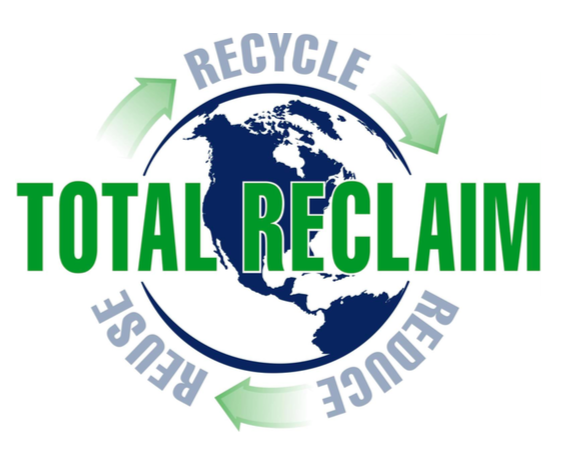
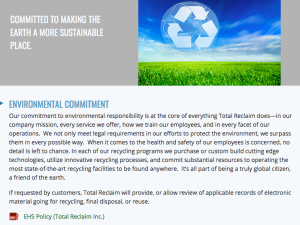
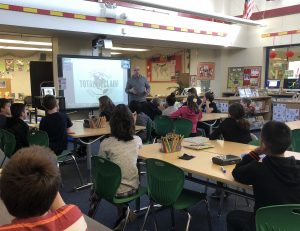
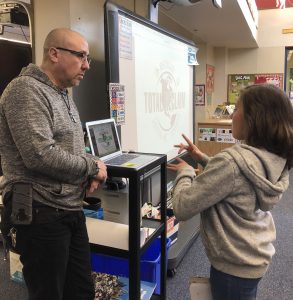
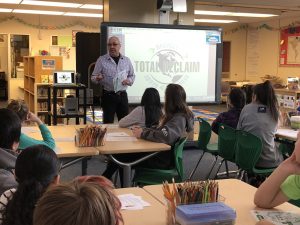
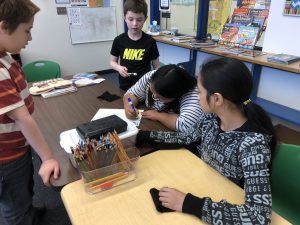
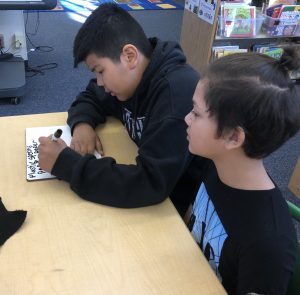 .
. 
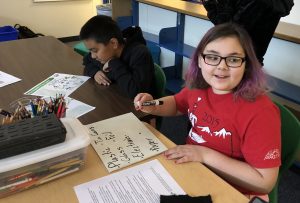
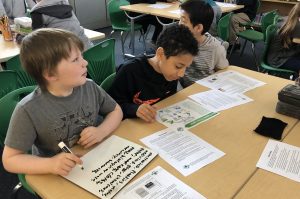
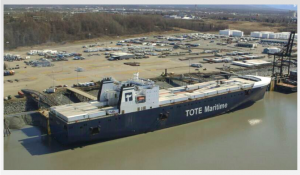





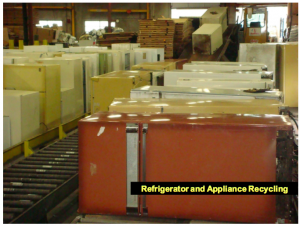
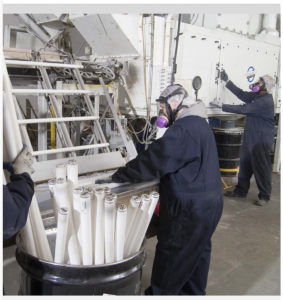
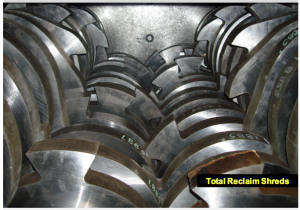
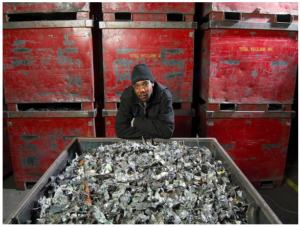
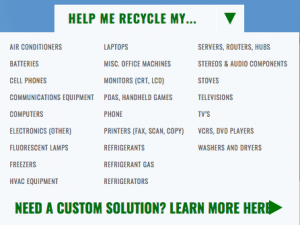
 .
. 
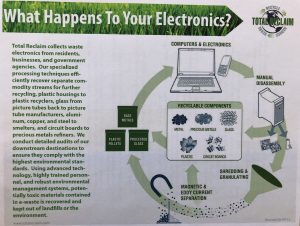 .
. 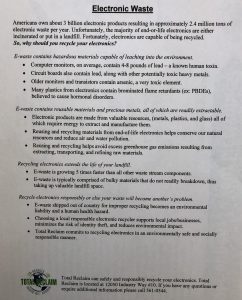
I had no idea that the ball fields were a land fill, but it does not surprise me given the land around it. Why is it that we seem to often push our trash into our waterways? Marshy areas are important, although not buildable so they are not viewed as valuable to developers. Hopefully our community has awakened a bit since that happened!
I was shocked to learn about the waste water being pumped out into the water, and made me disappointed that another option was not even thought of. I had never heard of Total Reclaim, and I am definitely going to be promoting them, and thinking a lot more about Reducing, Reusing, and Recycling!
Wow! What an informative presentation. I was shocked to find out that the water from landfills is pumped into the inlet without treatment. I am now curious to know where all the previous landfills were located in Anchorage. Is that information available to future homeowners? I am pleased to see that recycling is also available in rural Alaska especially with high fuel/transportation costs.
It’s eye opening and troubling to hear what happens with landfills. Ignorance is bliss. Knowledge is power – and it leaves me thinking about what I and what my students can do.
What presentations like this do is create… globally aware students/adults. It shows why we should invest in our planet. I love the interactive presentation in this case, the students were so engaged and involved and seemed to really show an interest in finding ways to help clean up our environment.
I didn’t realize the extent of things that could be recycled. I had no idea that light bulbs could be recycled. Very cool!
I was not aware of the services that Total Reclaim provided for our state and the residents both in Anchorage and the surrounding areas. This is a great opportunity for students to be stewards of our planet and make a difference. Congratulations to the students at Tudor Elementary School.
So much to learn! I play softball at DeLa Vega Ball Fields and recently learned that is was a landfill. Near one of the fields there is this rubber pipe that is coming out of the ground (about 5 feet lay loose on the dirt). When constructing the fields they said everything was covered 10+ feet deep, but when they dug the poles is was only a couple feet down that they hit waste. I love that student’s idea to purify the water instead of just dumping into the bay. Thinkers like this child is what is going to create great change in this world for the good of the environment.
I had to help my MIL move out of her house in Seattle. It was really hard to just throw anything away, because they have stict recycling rules there. If you didn’t recycle the item, I think they would weigh, and charge you for the garbage. There were fines for recycled items found in the trash.
How awesome that Total Reclaim presented so much information about recycling in Alaska. I learned quite a bit also- I totally didn’t know about building over so many former landfills and letting the toxic water flow untreated into the inlet. Ugghh! Just last week I was excited to receive the recycling flier in the mail and checking it over to see what and where to recycle. I recall moving to Anchorage in 1996 and asking my landlady where to recycle my bottles and such and she said that there was no need to do that. It’s been great to see how Anchorage has made so many improvements in recycling, but with more possibilities for the future. It’s so exciting that students are learning to protect the Earth not just on Earth Day, but everyday.
Wow! I just learned by reading the post that landfill water is pumped back into the ocean. It makes me really think about the waste I generate. Using a community business to talk about a local and global issue makes the topic very meaningful for the students and starts the conversation about possible solutions for our community and beyond.
I was shocked at so much of what was shared in this presentation. There are LOTS of local organizations willing to do outreach with classrooms/students/families
Wow! Lots of really important info! Thanks for sharing. It is so good to know that there are such great resources to share with our students not just to inform them but to also inspire them.
I love that our cities, towns, communities, and states have LOTS of resources at our fingertips. Sometimes, it’s just about initiating that contact. Embracing our idea of a sustainable community is exciting!
Our local community has so many resources. I looked us “Recycling”, “waste”, “green energy”, to name a few things, plus “Anchorage” and came up with pages of lists. In contacting only the first 10, I got 9 out of 10 saying they would be willing to partner with teachers. Helping our students embrace their own community understanding with how to take care of it, is so important.
It’s great that the kids at Tudor Elementary are getting used to seeing experts come in to share their knowledge. I can imagine one of them thinking to themselves, “I want to be an expert on that so I can talk to kids about the value of recycling…” Or what ever they choose to become experts on…
In one of my college classes, we took a field trip to the landfill in Mat-Su. I thought it was a little crazy for us to take a field trip there, but quickly realized many things I didn’t know about recycling here in Alaska and was grateful to have the opportunity to learn! Thank you for sharing this information with us! I didn’t know that light bulbs could be recycled! Way to go Total Reclaim and Tudor Elementary for helping keep our state and earth clean!
My students were amazed that not all plastics were accepted at our recycling facilities in Anchorage. We recently visited a stream in our watershed and saw plastic pollution along the banks. Students offered up recycling as a solution, but they were stumped when they were told that it wasn’t possible for some plastics to be recycled here. Perhaps this will lead to a push for more recycling capacity in the future for Anchorage.
This looks like it was a great way to learn more about local actions that kids can do to help their community and the world be a better place. Way to go students at Tudor Elementary!
Wow! What an amazing opportunity for kids to become stewards of their own city, state, country, and planet. It is wonderful that such a knowledgeable person was willing to share his time and knowledge with you!
Thank you for sharing such a wealth of information that I can act upon right here in Anchorage! I thought that I was good about recycling mostly everything that I can here, but after reading your post, I now know that I can recycle light bulbs. I didn’t know that. I also didn’t know about the landfills, the landfill water getting pumped into the ocean, or fish (and humans) getting high levels of mercury due to the waste that we put into the water. Your school is doing a great deed by learning about important issues in our area/world–please keep sharing!
It is important to teach our kids to take care of the earth we live in and I really like that this lesson went deeper on the explanation of what can and can’t be recycled and even educating the students about our landfill. These are informations student can take back to families and help spread awareness. Total Reclaim Alaska seems like a great organization that I would like to connect with in the future.
Thanks for sharing this. I love how the speaker and teacher got students thinking about the topic through an interactive presentation. It is great to see community members brought into the school and a focus on local issues. I also love that this blog post is education.
I have done a lot of presentations to students about the importance of recycling. I have to say that the students from Tudor Elementary School was the most involved and attentive group I’ve ever had the opportunity to work with. They show great passion and interest for making our environment as sustainable as possible. With students like these, our future is in good hands.